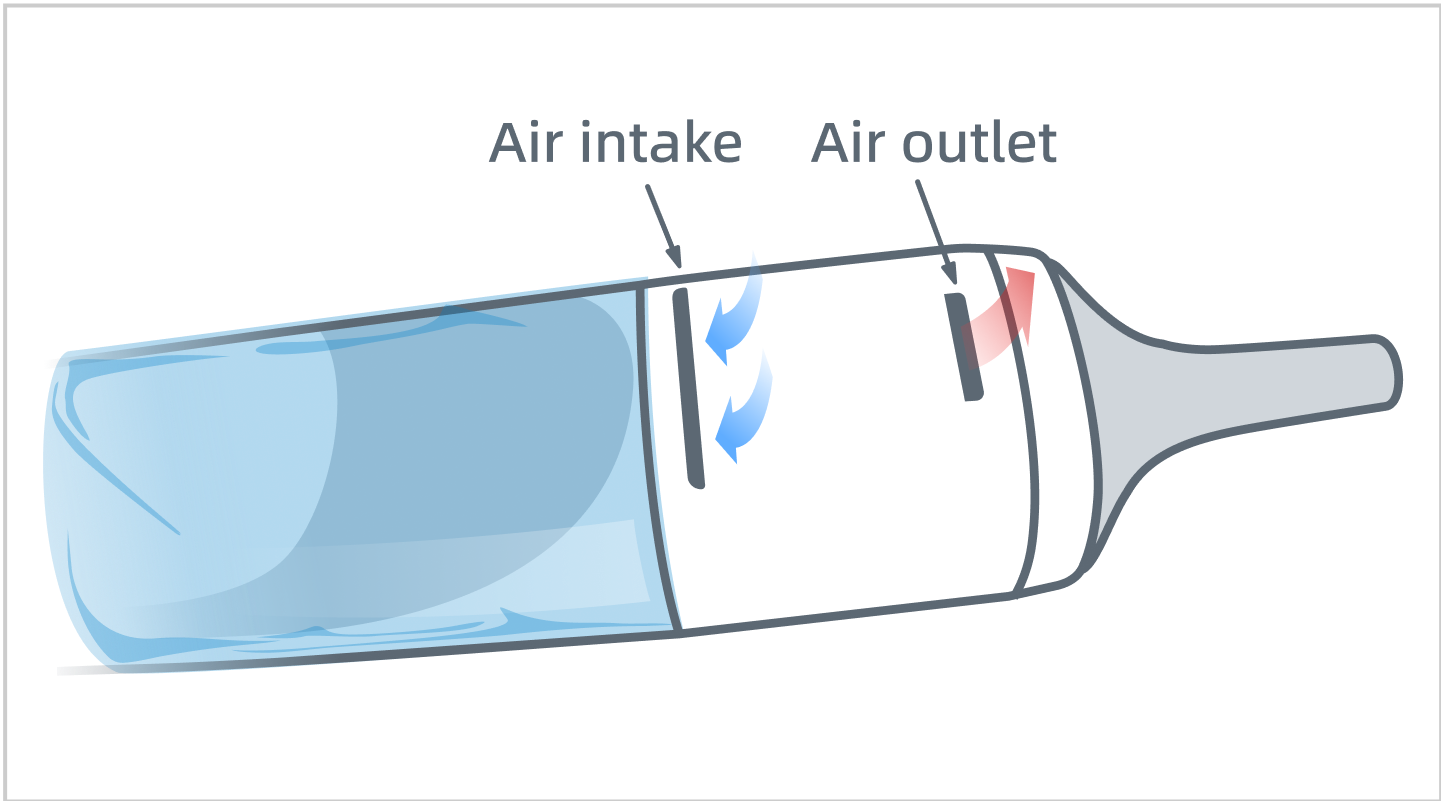Scanning Preparations¶
Caution
-
Concerning hand hygiene and personnel safety when performing a scan, you must wear clean surgical gloves through the whole process.
-
If you need to use isolation film or protective film (such as blue film) to wrap the scanner, please do not block the air inlet and outlet of the scanner to avoid affecting the heat dissipation.

- Make sure there is no foreign body or blood in the mouth after gargling. Stop the bleeding if necessary.
- If necessary, ask the patient to keep the tongue still and move it to the other side of the mouth.
- Consider using a dental three-way syringe or cotton to dry the tooth surface before starting the scan.
- Turn off the oral light on the dental chair and start scanning.
- Consider using aspirators or cotton to keep the surfaces dry during scanning.
- If necessary, consider using an oral mirror to help create space while working in the narrow area between the teeth.
- Ensure that the scanner tip, scanner body, and cradle are properly pre-cleaned, disinfected, or sterilized. More Details see Pre- cleaning, disinfection, and sterilization.
- Ensure that the scanner tip has no scratches or is not damaged. Additionally, the tip is firmly attached to the front end of the scanner body.
- Ensure that the scanner connection is ready; it is correctly connected to a power source and powered on, and IntraoralScan is launched and ready to work.
- To avoid condensation on the mirror of the tip when scanning, the scanner tip must have been warmed up.
- Calibrate the scanner and verify the accuracy of the acquisition regularly. More details see Calibration.
- Avoid direct light from any light source, e.g. dentist chair lamp, to shine on the area you are working on.
- Hold the scanner steady by resting it on the tooth surface and keep the scan tip window in the range of -1 mm to 16 mm from the teeth.
- When scanning, slowly move the scanner and simultaneously check the scan results on the screen to ensure that the scanning is of good quality.
- When scanning, the scanner tip should be centered over the teeth, and each movement should align with the cross-hairs, following the lower and upper dental arch shapes.
- A complete scan data of a single area includes the surfaces of , lingual, buccal, interproximal contacts of the adjacent teeth, and 2-3 mm buccal gingiva.
- A complete scan data of a single case includes the lower jaw, upper jaw, and bite registration.
- When scanning, change the scanning angle to 35-55 degrees to create overlaps. It is important to achieve an overlap of at least 30% between each acquisition. If the overlap is small, it may cause the alignment to fail.
- To scan the occlusal surface of the teeth, hold the scanner at a 90-degree angle; to scan the buccal and lingual surfaces of the teeth, hold the scanner at a 45-degree angle.
- Inspect the scanned image in the 3D scan view window (IntraoralScan) and pay attention to warning messages.
Heat the Scanner Tip
To ensure the quality of optimal images, you should prevent condensation on the scanner mirror before each scan by heating the scanner tip.
Follow the steps below to warm up the scanner before starting an acquisition:
1 Ensure that the scanner tip, scanner body, and cradle are clean.
2 Gently and carefully attach the scanner tip to the scanner body, with the mirror facing downward.
3 Connect the power supply to the scanner. More details see Connection.
4 Place the scanner in the cradle to secure it in place.
5 When the LED ring light on the scanner body lights up green, the heater automatically turns on and detects the temperature.
It the temperature of the scanner tip is lower than the set point for anti-fogging, a notification message of pre-heating and current temperature appears.
When the message disappears, the warm-up is done. The scanner is now ready for an acquisition.
Note
-
The heater helps keep the scanner tip temperature in a normal range.
-
The scanner tip is being heated whenever power is supplied, even if the scanner is in standby or sleep mode.
-
If the heater does not reach the necessary temperature for preventing condensation during scanning, the message of The scanner is pre- heating. Please wait appears.